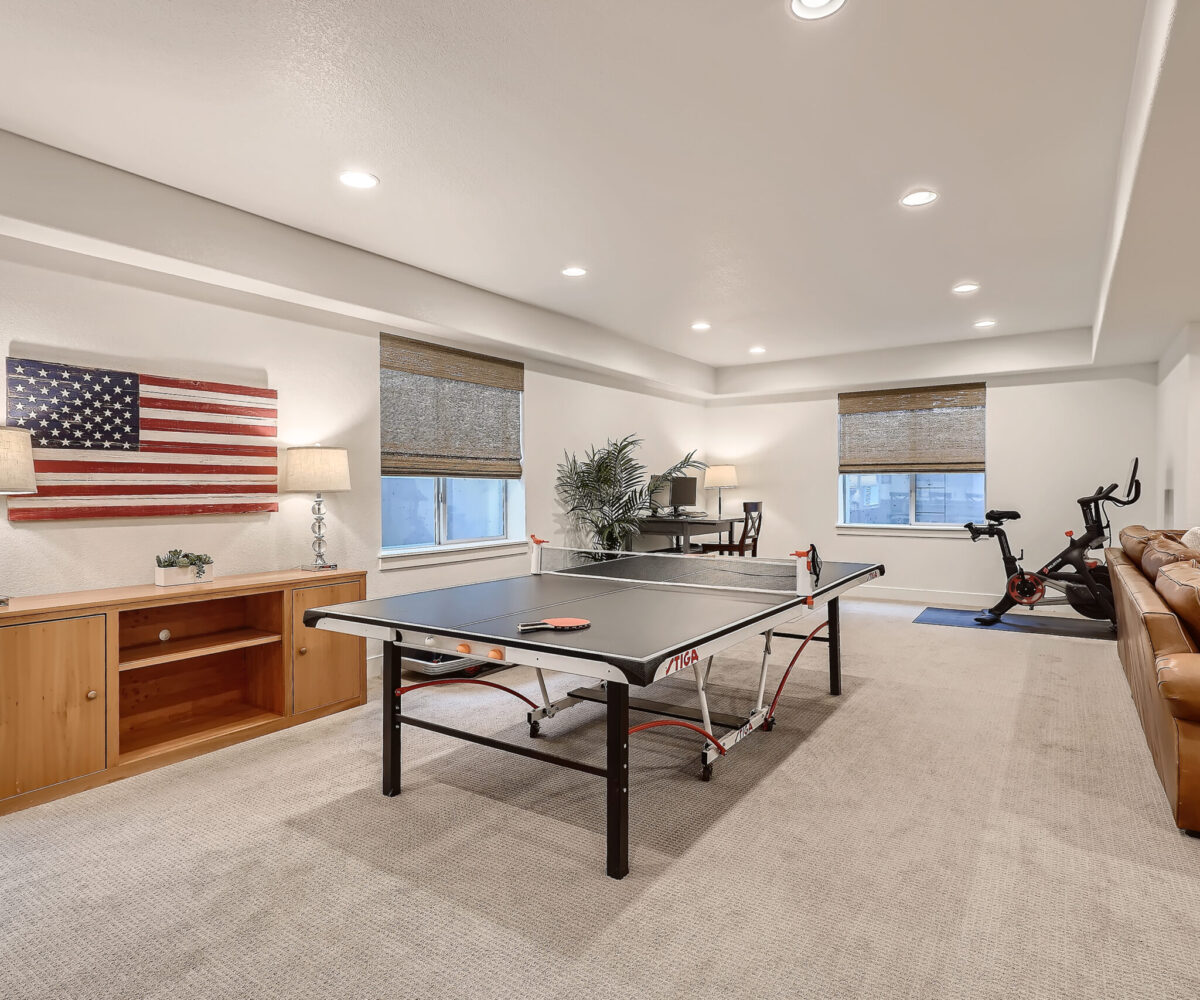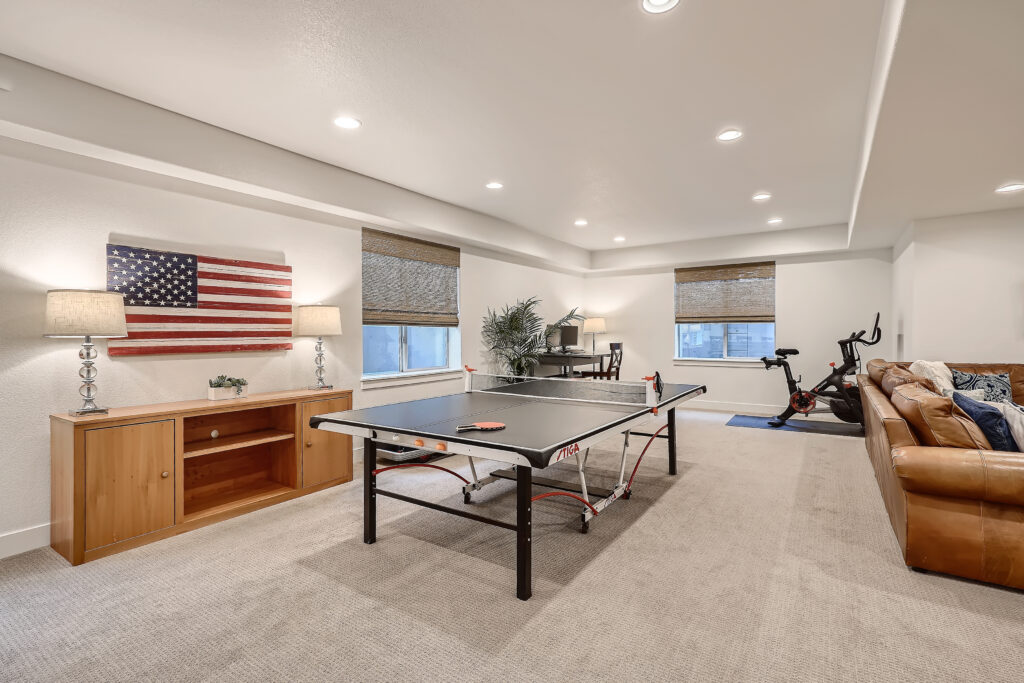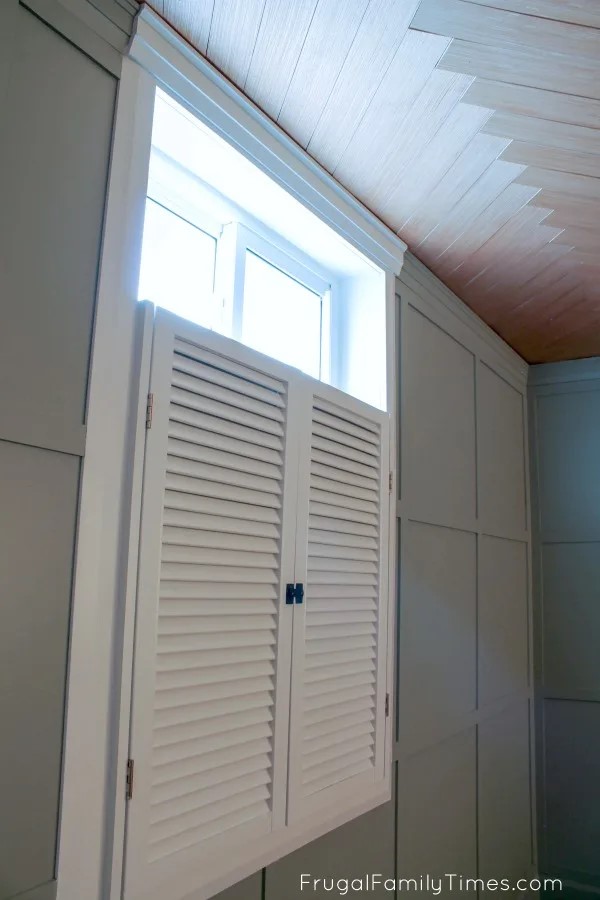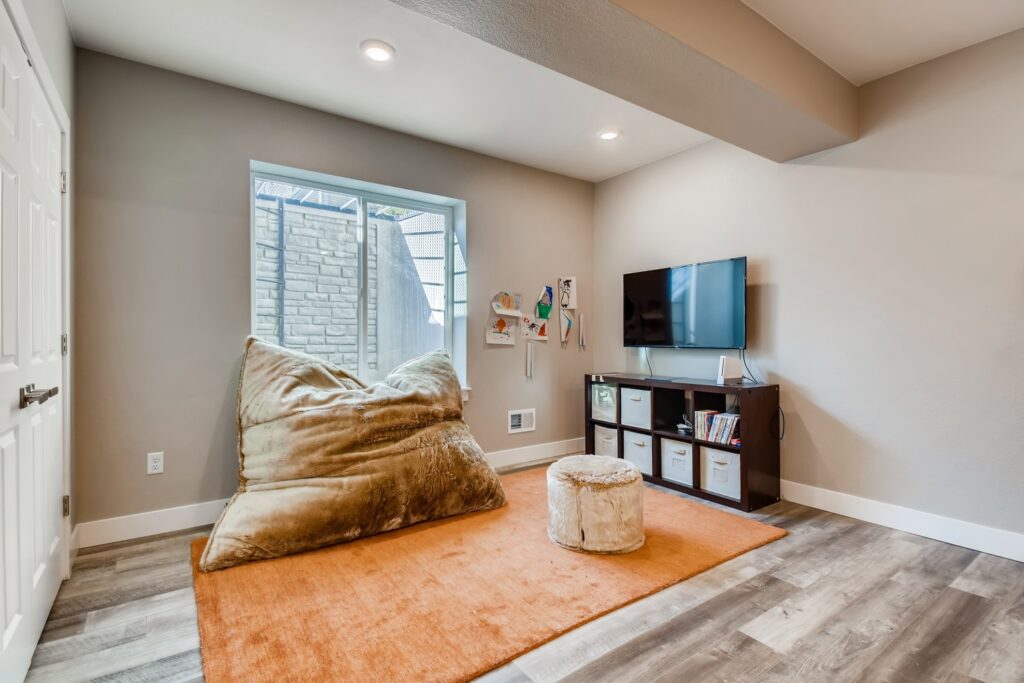Dress for Success: Basement Window Edition
The leather sectional arrived and you’re finally ready to settle in and enjoy your newly-finished basement! But what about those less-than-beautiful basement egress windows? How do you cover up the unsightly metal window wells without blocking out all of the light?
Dressing basement windows can be tricky, as—in addition to not wanting to block out too much light—you must also consider such factors as size and placement of the windows, which are often quite different from windows in other parts of the home. Often, basement windows are smaller and much closer to the ceiling, proving more difficult for window treatment installation.
Don’t despair! We’ve rounded up a list of our favorite types of window coverings for a basement installation, proving that your newly-finished space can be just as stylish as the rest of your home.
Woven Wood / Bamboo Shades
Woven wood blinds offer light-filtering privacy with the warmth of natural texture and neutral tones. Typically mounted on the inside of the window frame, they sit flush with the wall, adding a simple yet sophisticated finishing touch to the room. They are available with a range of upgrade options, from black-out liners (ideal for a bedroom or theater) to motorized lift operation.
Plantation Shutters
Though leaning toward the spendy side of the spectrum, plantation shutters lend a timeless, refined ambiance to a room. Custom-built to fit inside each window, the wide louvers covering the window can be adjusted to let in as much or as little light as needed. Available in both wood and composite materials, this type of wide-plank shutters provides a classic option to suit a wide range of décor styles.
Roman Shades
For those looking for more of a drapery look, Roman shades—often referred to as Roman blinds—offer a unique window dressing solution. Made of fabric, Roman blinds can be customized to fit the color scheme and décor of any room, and may be lined or unlined to customize the amount of light filtering. The blind is mounted inside the window frame, can be adjusted up or down, and typically lays flat with pleated folds at the bottom of the shade.
Pleated / Cellular Shades
Newer models of cellular-type shades combine the simplicity of a roller shade with an energy-efficient honeycomb construction that traps air, creating a layer of insulation between the window and a room’s inside temperature. Available in a wide range of fabrics and colors, as well as options for the degree of opacity, cellular shades work well in a basement setting.
Creative Installations
If your home is older, with those tiny, high windows, you can trick the eye by building a larger frame around the window and installing shutters under the window, as done by the creative DIYers at Frugal Family Times. What a fantastic way to make the most of a tiny window and add character to the room!
Scrap the Window Treatments Altogether
What? You thought this was a post about dressing the basement windows! If you’re fortunate enough to have something other than corrugated metal lining your basement’s window wells, you may find that leaving the windows undressed is an option, after all. The stacked stone pictured in these egress windows adds texture and color to the room, avoiding the prison cell vibe altogether.
Before you can start planning the window treatments, however, you’ve got to find the right company to finish the basement. Sheffield Homes Finished Basements & More has years of construction experience in the Denver metro area and in northern Colorado, and we’d love to give you a no-obligation estimate on your project. Check out our 5-star reputation on Google! Contact us today to schedule your appointment.




